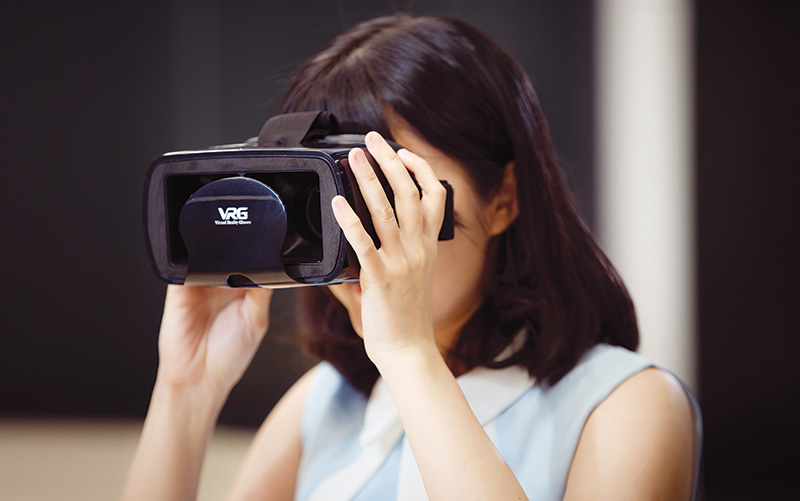VR Experience Helps with First-Person Perspectives
An award-winning project utilises VR technology to help provide students with immersive experiences that aid them in their writingOne of the winners of the Innovative CityU-Learning Awards Semester B, 2020-2021 was Tiffany PANG, who earned the prize for her work “VR in Everyday Language Classroom: A Practical Approach to Language Learning in a Digital Environment”. This project immersed English for humanities and social sciences students in a computer-generated world via Virtual Reality (VR) headsets. They then turned their experiences into a narrative before presenting this work to the class.
The Awards, introduced since the University’s implementation of CityU-Learning, aim to recognise innovative approaches implemented towards enhancing the quality of online and/or hybrid learning at CityU.
First-Person Problems
Pang is Instructor II at Chan Feng Men-ling Chan Shuk-Lin Language Centre (Language Centre) under CityU’s College of Liberal Arts and Social Sciences. Her VR headsets utilised pre-recorded videos, often sourced from YouTube, to help students experience first-person perspectives and how personal observations affect their writing.
Drawing an example from one exercise, Pang says, “I showed students a video of a haunted building. They watched the video through the VR headset, which gives the impression as if they were there in person. Afterwards, they wrote a story in first person based on their viewing.”
If you don’t keep trying out new innovative approaches you will lag behind
Tiffany Pang
Pang implemented this approach after witnessing the difficulty some students experienced in her class. “I realised that certain students sometimes find it quite hard to imagine a story because they never experienced it themselves. If I say, ‘you are now in the hospital testing positive for the Coronavirus’, they have difficulty writing a narrative in first person based on that because they have never experienced it. How can they write the story properly then? This is why I came up with the idea of using VR technology within the language classroom.”
Although they cannot interact with things inside the video environment, at the very least they can have an immersive experience, Pang explains, and get the feeling of a first-person perspective.
Another consideration the language instructor has for her students is that the tool must be easy to use and that it can be easily applied in the language classroom.
“In the CityU library, there is a place called Discovery Corner where there is a professional VR device for students to try out. It has been there for, I think, four to five years but few people seem to be interested in trying it. I think it’s because the machine is complicated and highly technical,” Pang recollects. This aided her in thinking of ways to procure affordable VR headsets. “For a few bucks, we can supply a wide range of students.”
The result is an uptake of students being able to do their assignments with promising results after using the VR tool.
“When I applied for the award, I did not just mention the VR technology,” Pang elaborates. “I also mentioned the collaborative writing activity that comes after the VR activity because the learning process is not just about the VR experience, it is a catalyst for what comes after – which is using the experience to collaboratively write a story from the first-person perspective.”
The Next Step: Content Creation
Having received the award, Pang hopes to persuade her colleagues to use VR learning in their own teaching. Innovation, after all, is an important part of CityU’s agenda.
“If you don’t keep trying out new innovative approaches you will lag behind,” Pang says before adding, “CityU’s Language Centre has a supportive environment. The overall teaching and learning atmosphere is quite positive in the sense that we have a lot of sharing sessions and activities for the teachers to communicate their teaching ideas. We get together and try to come up with new pedagogies that can help our students learn.”
Pang intends to further develop VR pedagogy into something more student-centred, she divulges. “Right now, I use videos on YouTube. I can choose from a pool of VR videos but I don’t only want to choose, I want to create and invite my students to create videos too.”
The next step is to ask students to produce their own VR videos by using VR cameras that Pang intends to acquire using the grant for winning the award. These videos will, in turn, be utilised in language lessons where they can be viewed by classmates to further help collaborate on writing projects.




